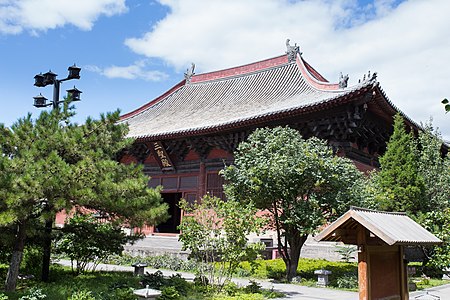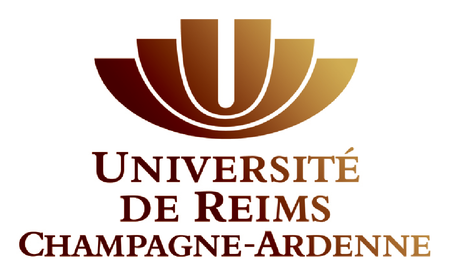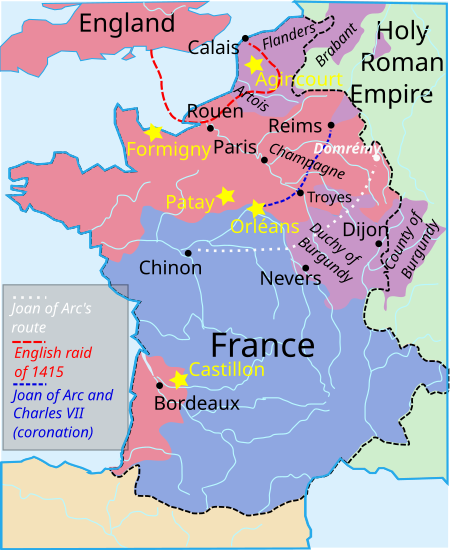Pomoan languages
| |||||||||||||||||||||||||||||||||||||||||||||||||||||||||||||||||||||||||||||||||||||||||||||||||||||||||||||||||||||||||||||||||||||||||||||||||||||||||||||||||||||||||||||||||||||||||||||||||||||||||||||||||||||||||||||||||||||||||||||||||||||||||||||||||||||||||||||||||||||||||||||||||||||||||||||||||||||||||||||||||||||||||||||||||||||||||||||||||||||||||||||||||||||||||||||||||||||||||||||||||||||||||||||||||||||||||||||||||||||||||||||||||||||||||||||||||||||||||||||||||||||||||||||||||||||||||||||||||||||||||||||||||||||||||||||||||||||||||||||||||||||||||||||||||||||||||||||||||||||||||||||||||||||||||
Read other articles:

Election in Massachusetts This article has multiple issues. Please help improve it or discuss these issues on the talk page. (Learn how and when to remove these template messages) This article includes a list of general references, but it lacks sufficient corresponding inline citations. Please help to improve this article by introducing more precise citations. (August 2013) (Learn how and when to remove this message) This article relies largely or entirely on a single source. Relevant discussion…

この項目には、一部のコンピュータや閲覧ソフトで表示できない文字が含まれています(詳細)。 数字の大字(だいじ)は、漢数字の一種。通常用いる単純な字形の漢数字(小字)の代わりに同じ音の別の漢字を用いるものである。 概要 壱万円日本銀行券(「壱」が大字) 弐千円日本銀行券(「弐」が大字) 漢数字には「一」「二」「三」と続く小字と、「壱」「弐」…

丹尼爾·奧蒂嘉José Daniel Ortega Saavedra尼加拉瓜總統现任就任日期2007年1月10日前任恩里克·博拉尼奥斯任期1985年1月10日—1990年4月25日前任自己(國家重建軍政府协调员)继任比奥莱塔·查莫罗國家重建軍政府协调员任期1979年7月18日—1985年1月10日前任安纳斯塔西奥·索摩查·德瓦伊莱继任改任總統 个人资料出生 (1945-11-11) 1945年11月11日(78歲) 尼加拉瓜瓊塔萊斯省[1]政党�…

Datong 大同市TatungKota setingkat prefektur Dari atas ke bawah, kiri ke kanan: Panorama Datong; Kuil Shanhua; Kuil Huayan; Gua Yungang; Menara di Kuil Lingyan; Kuil Konfusius (Wenmiao); Kuil Guandi; Gerbang Yinghui dari Tembok KotaLokasi yurisdiksi Kota Datong di Shanxi.Koordinat (Pemerintah Kota Datong): 40°05′49″N 113°22′01″E / 40.097°N 113.367°E / 40.097; 113.367Koordinat: 40°05′49″N 113°22′01″E / 40.097°N 113.367°E…

此條目可能包含不适用或被曲解的引用资料,部分内容的准确性无法被证實。 (2023年1月5日)请协助校核其中的错误以改善这篇条目。详情请参见条目的讨论页。 各国相关 主題列表 索引 国内生产总值 石油储量 国防预算 武装部队(军事) 官方语言 人口統計 人口密度 生育率 出生率 死亡率 自杀率 谋杀率 失业率 储蓄率 识字率 出口额 进口额 煤产量 发电量 监禁率 死刑 国债 外…

This article is about all-time records. For a season-by-season statistical breakdown, see List of Newcastle Jets FC seasons. Newcastle's starting lineup for the 2008 A-League Grand Final Newcastle Jets Football Club is an Australian professional association football club based in Speers Point, Newcastle. The club was formed in 2000 as Newcastle United before being renamed as Newcastle Jets in 2005. After spending their first four seasons participating in the National Soccer League, Newcastle bec…

American BuffaloTheatrical release posterSutradaraMichael CorrenteProduserGregory MosherDitulis olehDavid MametPemeran Dustin Hoffman Dennis Franz Sean Nelson Penata musikThomas NewmanSinematograferRichard CrudoPenyuntingKate SanfordPerusahaanproduksiCapitol FilmsChannel Four FilmsDistributorThe Samuel Goldwyn CompanyTanggal rilis 13 September 1996 (1996-09-13) Durasi88 minutesNegaraUnited KingdomUnited StatesBahasaEnglishPendapatankotor$632,054[1] American Buffalo adalah film…

Molekul indol pada model 2D. Indol adalah molekul yang berbentuk planar dengan sistem elektron 10Π terkonjugasi, 2 berasal dari nitrogen dan 8 berasal dari karbon.[1] Sejarah Indol pertama kali dimurnikan oleh seorang ilmuwan bernama Baeyer pada tahun 1866 dengan metode distilasi debu seng dari oksindol.[1] Indol berperan penting dan banyak digunakan pada bidang kimia karena hubungannya dengan pewarna alami yaitu indigo.[1] Degradasi kimiawi dari pewarna ini akan menghas…

Masaharu FukuyamaInformasi latar belakangNama lahirFukuyama Masaharu (福山雅治)Nama lainMasha, Masha-nii, Bike-sanLahir6 Februari 1969 (umur 55)NagasakiAsalNagasaki, Prefektur NagasakiGenreJ-PopPekerjaanPenyanyi, pencipta lagu, aktor, presenter radio, fotografer, bintang iklanInstrumenGitarTahun aktif1990 - sekarangLabelBMG Japan (1990-1999)Universal Music (2000 - sekarang)Situs webMasaharu Fukuyama Portal Jepang Portal Musik Masaharu Fukuyama (福山 雅治code: ja is deprecated , Fuku…

Underwater diving during the hours of darkness A canister style dive light Night diving is underwater diving done during the hours of darkness. It frequently refers specifically to recreational diving which takes place in darkness. The diver can experience a different underwater environment at night, because many marine animals are nocturnal.[1] There are additional hazards when diving in darkness, such as dive light failure. This can result in losing vertical visual references and being…

For the Parliamentary constituency, see Derbyshire Dales (UK Parliament constituency). Non-metropolitan district in EnglandDerbyshire Dales DistrictNon-metropolitan districtView of Matlock, both the administrative centre of Derbyshire Dales and the official county town of DerbyshireShown within DerbyshireSovereign stateUnited KingdomConstituent countryEnglandRegionEast MidlandsAdministrative countyDerbyshireAdmin. HQMatlockGovernment • TypeDerbyshire Dales District Council …

1969 studio album by Johnny MathisLove Theme from Romeo and Juliet (A Time for Us)Studio album by Johnny MathisReleasedJuly 30, 1969[1]RecordedJanuary 18, 1969June 5, 1969June 10, 1969June 13, 1969[2]GenreVocalpop/rock[3]Length33:40LabelColumbiaProducerJack Gold Robert Mersey[4]Johnny Mathis chronology The Impossible Dream(1969) Love Theme from Romeo and Juliet (A Time for Us)(1969) Give Me Your Love for Christmas(1969) Professional ratingsReview scoresSou…

Not to be confused with Reims University (1548–1793). Public university based in the Grand-Est region of France University of Reims Champagne-ArdenneUniversité de Reims Champagne-ArdenneTypePublicEstablished1548-1793 (initial formation): Université de Reims 1971 (reestablished) 1982 (renamed): Université de Reims Champagne-Ardenne[1]Academic affiliationTPCPresidentGuillaume GelleAcademic staff2,468 including 1,411 professors, 1,057 personnel[2]Students28,786[3]Locati…

Эта статья — о химическом элементе. О романе Пирса Энтони см. Фтор (роман). Для термина «F» см. также другие значения. Фтор← Кислород | Неон → 9 F↓Cl Периодическая система элементов9F Внешний вид простого вещества Жидкий фтор Свойства атома Название, символ, но�…

Pranowo Direktur Jenderal ImigrasiMasa jabatan16 Maret 1995 – 4 Februari 1999PendahuluRoni Sikap SinurayaPenggantiMuhammad MudakirSekretaris Militer PresidenMasa jabatan1993–1995PresidenSoehartoPendahuluSyaukat BanjaransariPenggantiPetahana Informasi pribadiLahir2 September 1940 (umur 83)Blora, Jawa Tengah, Hindia BelandaKarier militerPihak IndonesiaDinas/cabang TNI Angkatan DaratMasa dinas1963—1995Pangkat Mayor Jenderal TNISatuanKorps Polisi Militer (CPM)Sunting ko…

King of France from 1422 to 1461 Charles VIIPortrait c. 1445–1450King of France (more...) Reign21 October 1422 – 22 July 1461Coronation17 July 1429PredecessorCharles VISuccessorLouis XIBorn22 February 1403Paris, FranceDied22 July 1461(1461-07-22) (aged 58)Mehun-sur-Yèvre, FranceBurial7 August 1461Saint Denis BasilicaSpouse Marie of Anjou (m. 1422)IssueDetail Louis XI of France Radegonde Catherine, Countess of Charolais Yolande, Duchess of Savoy Joan…

You can help expand this article with text translated from the corresponding article in Dutch. (April 2016) Click [show] for important translation instructions. View a machine-translated version of the Dutch article. Machine translation, like DeepL or Google Translate, is a useful starting point for translations, but translators must revise errors as necessary and confirm that the translation is accurate, rather than simply copy-pasting machine-translated text into the English Wikipedia. Do…

Author's house museum in London A major contributor to this article appears to have a close connection with its subject. It may require cleanup to comply with Wikipedia's content policies, particularly neutral point of view. Please discuss further on the talk page. (May 2016) (Learn how and when to remove this message) Charles Dickens MuseumCharles Dickens Museum, LondonAlternative namesCharles Dickens HouseGeneral informationTypeHouseAddressDoughty Street, London, EnglandDesignationsGrade I lis…

مدرسة ثانوية عمر الخيام دبیرستان عمر خیام مدرسة ثانوية عمر الخيام معلومات الموقع الجغرافي المدينة نيسابور البلد إيران تعديل مصدري - تعديل مدرسة عمر الخيام الثانوية من المدارس العريقة نيسابور ومن أقدم المدارس الإيرانية، مسجلة في منظمة التراث الثقافي في إيران. كان اف�…

أعمال البوصيرية هو تقسيم جُغرافي مصري استُحدث في عصر الدولة الفاطمية[1] على أراضي كور بوصير القديمة إحدى كور الوجه القبلي،[2] وكانت قاعدتها مدينة بوصير قوريدس، وظل العمل قائمًا بهذه الأعمال حتى الروك الناصري حيث أُلغيت أعمال البوصيرية، ووُزّعت قراها على أعمال الجيز�…


